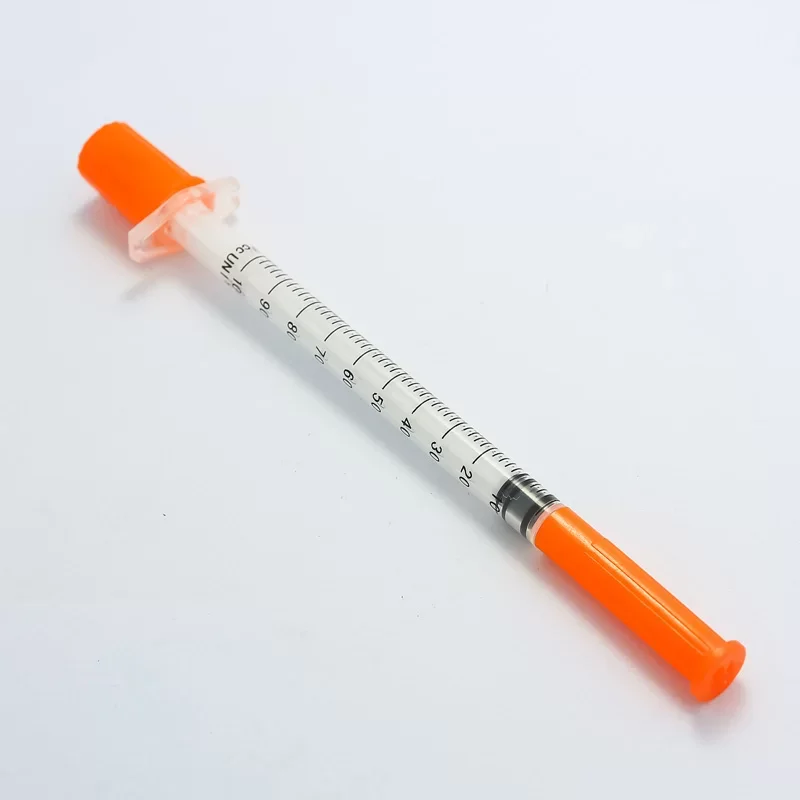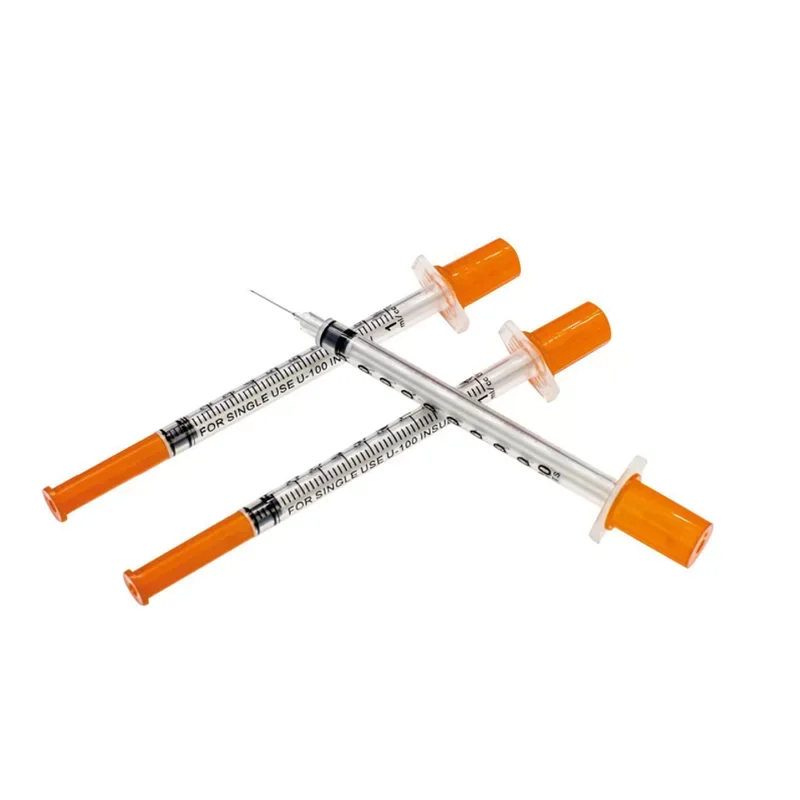Insulin therapy is one of the important means to achieve good glycemic control. Insulin injection devices and injection techniques are an important part of the use of insulin therapy. The survey shows that the phenomenon of irregular injection is widespread. CMC shares with you the precautions when injecting disposable insulin syringes.
Disinfection of the skin in the injection steps of the disposable insulin syringe
Use 75% alcohol or sterile cotton pads instead of iodine or iodine. An adequate dose of insulin must be checked before each injection. When injecting, gently pinch the skin at the injection site with the left hand, and hold the insulin pen with the right to pierce the needle directly into the pinched skin, and inject the liquid. seconds or more, then pull out the needle and press the eye of the needle with a dry cotton swab for more than 3 minutes.
After injection, put the inner needle cap on, unscrew the needle, discard the discarded needle, and put the pen cap back on. At the same time, pay attention to the preservation of insulin. Generally speaking, unopened insulin refills can be stored in an environment of 2°C-8°C (in the refrigerator). ℃) can be stored for about 1 month. Patients should take special care that insulin refills are not frozen or exposed to sunlight. Remarks: If injecting medium-acting or premixed insulin, it should be fully shaken before injection, but not vigorously shaken.

Pay attention to the use skills of disposable insulin syringes
1. For thin patients, 45-degree needles should be considered (31G*5mm or 32G*6mm needles can also be considered);
2. At the injection site, try to avoid two or more injections in the same place (about 2*2cm area) within a month;
3. If the abdomen and the outer side of the thigh are injected alternately, apply heat to the alternate parts to avoid induration;
4. Do not inject in areas with induration;
5. Details of the injection technique:
A. Pinch the skin (the strength of the hand should be appropriate, not too tight)
B. Needle insertion at 45 degrees (the needle insertion generally emphasizes fast forwarding, and even experience is not necessary. Slow insertion of the needle should be able to better avoid needle breakage accidents. To avoid pain, you can try to puncture the needle with the needle tip first, if it is too painful change the location)
C, push medicine (this should be a little slower)
D. While pushing the medicine, gradually loosen the pinched skin properly (this step is the key point, it should be noted that it is "relaxed gradually and properly", not just relax, nor let it go completely) E. The needle is released (the needle is generally also emphasized quickly Even the experience is not necessary. The need to pay attention to the needle out is to go out in the opposite direction of the needle, do not twist the needle, one is to avoid expanding the wound surface, and the other is to avoid breaking the needle)
6. A note on "Injection Technique Details": pinch the skin, the purpose is to increase the relative distance between the skin and the muscle, so that the insulin is injected into the subcutaneous tissue instead of the muscle; If you squeeze too tightly, it is equivalent to squeezing the liquid out. Therefore, you should push the medicine and relax at the same time. At this time, the hands need to be practiced for a while; The moment the needle leaves the skin, the greater the chance of the wound being caused by the elasticity of the needle. If the skin is still squeezed tightly at this time, the more liquid medicine will be squeezed out; hypodermic injection can be compared to a thin film. Water is injected into the sponge. If the sponge is not squeezed tightly, the epidermis needle will pass through; if it is squeezed and not loosened, the water will be squeezed out.

Disposable Insulin Syringe Exporter - CMC Medical
CMC Medical Tech Co., Ltd. was established in 2010. Our main business is disposable medical consumable. We have established long-term cooperation with medical device manufacturers and pharmaceutical company in more than 20 countries around the world with first-class quick response services and one-stop supply consulting solutions.














Comments (0)